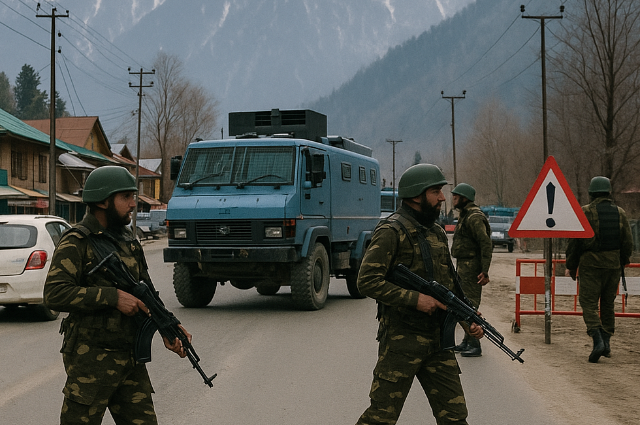
On April 22, 2025, the serene Basiran Valley in Pahalgam, known as "Mini Switzerland," witnessed one of the most horrific terror attacks in recent history. Three Pakistani terrorists, affiliated with Lashkar-e-Taiba (LeT) and including a retired Pakistan Army commando, carried out a meticulously planned massacre of tourists, killing 26 civilians and injuring nearly 20 others. As the gruesome details emerged, a disturbing truth came to light: local assistance had facilitated the attackers' entry.
Unveiling the Local Network
In June, India's National Investigation Agency (NIA) confirmed that it had apprehended two Kashmiri locals for their active involvement in the attack. The locals, pony cart drivers familiar with the terrain, had provided shelter to the terrorists in a secluded hut, known as a dhok, located 2 km from the Basiran meadow. Their assistance went beyond providing shelter, as they also supplied food, conducted surveillance, and informed the terrorists about security deployments for a meagre fee.
Attack Details and Execution
Witnesses recalled that the gunmen, dressed in military fatigues, emerged from the forest at around 1:30 pm, singling out male tourists and subjecting them to a cold, calculated display of religious discrimination. The attackers allegedly checked people for circumcision and recited the Kalima to identify non-Muslims for killing. Armed with military-grade M4 and AK-47 rifles and body cameras, the assailants launched a premeditated, coordinated attack that lasted 15-20 minutes before escaping into the Pir Panjal mountains.
Terrorist Affiliations: Tracing the Foreign Link
The investigation revealed that the attackers were affiliated with LeT and had received support from local Over Ground Workers (OGWs). Security forces have identified up to 15 native OGWs who facilitated planning, logistics, and evasive routes, and over 200 OGWs have been confronted in districts such as Anantnag, Pulwama, and Shopian.
Local Complicity: Beyond the Two Arrested
While the detention of the two locals made headlines, the probe suggests a larger network of local aid. Former J&K police officers pointed out that such a highly planned attack in a tourist area could only be possible with insider assistance.
Human Faces Amid Horror
As locals face criticism for their alleged involvement, stories of bravery and solidarity have also emerged. One such hero is Nazakat Ahmad Ali Shah, a pony guide and local businessperson who rescued 11 tourists, including a BJP leader's daughter, by embracing them to safety and informing the terrorists that they were his own family. Unfortunately, his cousin, Syed Adil Hussain Shah, lost his life protecting others.
Security Implications and Diplomatic Tensions
The attack shattered claims of security normalization in the Valley, prompting Prime Minister Modi to pledge complete accountability and promise to bring the culprits to justice. India responded by implementing diplomatic and bilateral actions, including the suspension of the Indus Waters Treaty and Attari visa exemptions, and expelling Pakistani service-affiliated military officers from the high commission.
Tourism's Fragile Recovery
Tourism, the economic backbone of Pahalgam, suffered a significant setback, with cancellations exceeding 80% post-attack. However, recent weeks have seen signs of recovery, with tourists trickling back.
What Comes Next
The NIA's five-day remand of the two arrested locals indicates mounting efforts to expose the extent of the terror supply chain. Investigations aim to map the web of conspiracy, track the movement of weapons and suspects, and identify and neutralise remaining suspects, including Pakistani handler networks.
Conclusion: A Region at a Crossroads
The Pahalgam attack exposed weaknesses at the nexus of cross-border militancy and domestic facilitation. While the attack was devastating, it also highlighted the bravery and compassion of local heroes like Nazakat Shah, who demonstrated the overwhelming rejection of violent extremism by Kashmiris. India's challenge now is to dismantle the terror network without antagonising a traumatised local population, through a combination of military action, building trust, economic revival, and broad-based governance.
